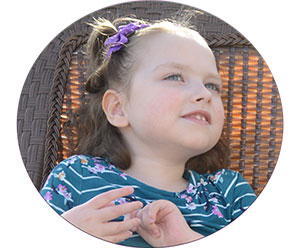This is our Story. This is our Life.
|
Introductory of Rett Syndrome...
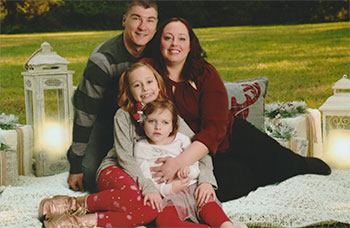 |
Rett syndrome is a unique, postnatal neurological disorder that is recognized in infancy and seen almost primarily in girls. Rett syndrome has often been misdiagnosed as autism, cerebral palsy, or global developmental delay. Rett syndrome is caused by mutations of the X chromosome in a gene called MECP2. There are more than 200 different mutations and deletions found in the MECP2 gene. Rett syndrome does not discriminate, it strikes all racial and ethnic groups, and occurs worldwide in 1 out of every 10,000 females. It is not a degenerative disorder. Rett syndrome causes problems in brain functions that are responsible for cognitive, sensory, emotional, and motor and autonomic function. These can include learning, speech, sensory sensations, mood, movement, breathing, cardiac function, chewing, swallowing, and digestion.
Children with Rett Syndrome develop symptoms after an early period of apparently normal or near normal development. These symptoms appear between six to eighteen months of age when there is a slowing down or stagnation of skills. A period of regression then follows when they lose communication skills and purposeful use of their hands. Soon, stereotypical hand movements, such as handwashing, plus gait disturbances and slowing of head growth development become apparent. Other problems may include seizures and disorganized breathing patterns while they are awake. In the early years, there may be a period of isolation or withdrawal when they are irritable and cry inconsolably. Over time, motor problems may increase, but in general, irritability lessens and eye contact and communication improve. Rett syndrome is confirmed with a simple blood test to identify the MECP2 mutation. However, since the MECP2 mutation is also seen in other disorders, the presence of the MECP2 mutation is not enough for the diagnosis of Rett syndrome. Diagnosis requires the presence of the mutation (a molecular diagnosis) and fulfillment of the diagnostic criteria (a clinical diagnosis, based on signs and symptoms that can be observed).
Rett syndrome causes a wide range of disabilities ranging from mild to severe. The course and severity of Rett syndrome is determined by the location, type and extent of the mutation, and X-inactivation. Therefore, two girls of the same age with the same mutation can appear quite different. Rett syndrome presents many challenges, but with love, therapy and assistance, those with the syndrome can benefit from school and community activities well into middle school age and beyond. They can experience a full range of emotions and show their personalities as they take part in social, educational, and recreational activities at home and in the community. |
|
2015: Where It All Began...
Sophia was born healthy. She enjoyed sleeping and loving on her parents, and most importantly, her big sister. However, a month after birth Sophia was admitted to Dell Children's Hospital for Parainfluenza Virus 3. This can be a deadly illness for infants. After being discharged we felt the worst was behind us. Less than a month later we discovered Sophia developed mild Torticollis, and shortly after that a lazy eye. Our first thought was this could happen to anyone. At 16 months Sophia began having difficulty pulling to stand and refused to walk without the assistance of a push toy or walker. We chose to have her evaluated by a physical therapist to help strengthen her legs and give her the confidence to walk unassisted. We were then referred to an occupational therapist because Sophia was not using her fingers to grasp things, but instead, she was "raking" with her hand. During the evaluation, we discovered that Sophia was having difficulties swallowing. She was having silent aspirations while she ate. While we were not sure what was causing the difficulty, we agreed to place a NG tube to allow Sophia to get the required nutrition. Shortly after the NG tube was placed she began improving and gaining weight. However, more testing was still being done. |
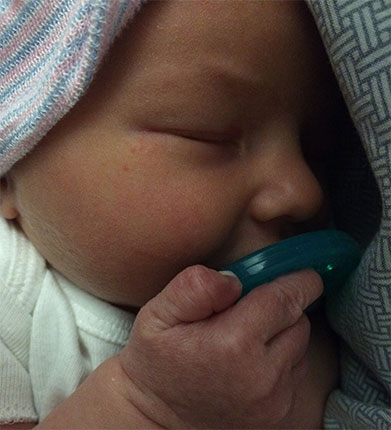 |
|
2016: Testing, More Testing, The Unknown, Then the Diagnosis
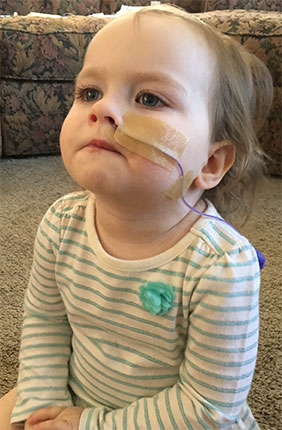 |
While all testing that could be done locally was completed and came back negative, a series of genetic tests had to be sent out to a specialty lab. We were informed it could take 60 days for the results to return. During this time she showed great improvement with her mobility, even though she pulled out her NG tube a number of times. In January 2017 we returned to her neurologist’s office to find out the results. The microarray and Angelman’s tests came back negative but the test for Rett Syndrome came back positive for a partial deletion of exons 3 and 4 on the MECP2 gene. We were devastated. We were referred to the Rett Clinic in Houston where her diagnosis was clinically confirmed. The neurologist was very excited about Sophia's progress. He had never had a patient with Rett who had started aggressive physical and occupational therapies or had an NG tube placed before the diagnosis. Sophia had gained four pounds within a month of having the NG tube placed, which is unheard of in children with Rett Syndrome. It is usually very difficult for them to maintain weight, let alone gain weight. |
|
2017: Lifelong Feeds via Tube
| The NG tube was a blessing as it helped Sophia gain weight. Sophia was very uncomfortable with the NG-Tube so at times she would pull it out. In April 2017, Sophia went back into the hospital to have a G-Button placed. We chose to have this done since feeding was going to be a lifelong issue. The G-tube has been amazing. We no longer have to worry about whether Sophia is getting all of her nutrition, hydration, and medicines. Since having the G-tube placed Sophia has gained five additional pounds. It has helped her gain strength, including in her core. Sophia continues to make great strides on her road to beating Rett Syndrome. The most important part of her improvement is ensuring she receives all her nutritional requirements. |
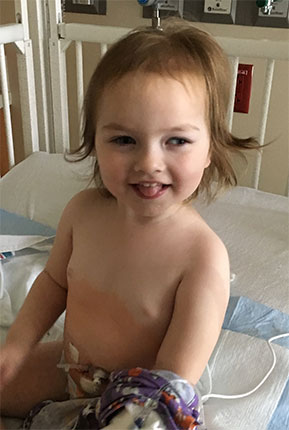 |
|
2018: New Employer Medical Benefit Issues...
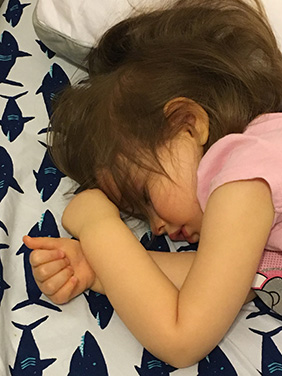 |
We experienced a change in insurance benefits and found the new insurance company was not covering her nutrition. A plan modification was required and took five months to complete. We took quick action to try every type of nutrition, including a blended diet. In early 2018 Sophia was hospitalized for excessively vomiting and malnutrition. She lost a noticeable amount of weight and became fatigued easily. After being discharged from the hospital she began slowly regaining her weight and energy back. Still to this day, she is working towards regaining her lost strength. We accrued a large amount of debt during the five months of denied coverage for nutrition. We hosted several fundraising events throughout the year and reached out to local media for assistance. While 2018 was stressful for our family, Sophia has not had any more major illnesses causing her to be admitted to the hospital. |
|
2019: Near Financial Collapse...
| Through crowdfunding from the prior year, Sophia was able to receive additional services in 2019. Sophia really enjoyed them. However, we experienced numerous financial setbacks including appliance, AC, and vehicle repairs. This hindered our family's budget, causing severe financial stress. We were forced to cancel Sophia's extra services. We were on the brink of filing for bankruptcy. Only through an unspoken loan were we able to purchase a new vehicle and repair appliances in our home. On top of the unfortunate and unexpected expenses, the weather during the first half of the year was not cooperating. As a result, we were not able to raise funds via our planned garage sales. Fortunately, Sophia did not have any more major illnesses causing her to be admitted to the hospital. |
 |
|
2020: COVID-19. Sophia's Isolation...
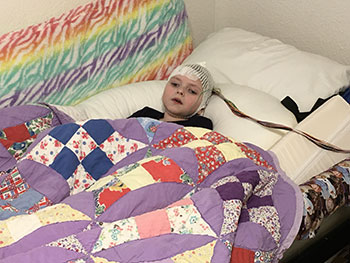 |
A pandemic broke out causing the world to take protected measures to keep safe and healthy. The most vulnerable where required to take extreme measures to prevent becoming ill with the Coronavirus Disease (COVID-19). For most, this disease acts like the common cold/flu. However, for those who are elderly, or have an underlining medical condition, it can cause death. For Sophia, we had to cancel services and provide education remotely for a while. We monitored the state's Health and Human Services COVID-19 Dashboard as well as the Center of Disease Control and Prevention (CDC) for guidance and tracking. Later in the year, as States reopened and allowed limited activities, we very cautiously restarted essential services for Sophia. We asked all providers to wear the personal protective equipment (PPE). It was not until then that we noticed the damage COVID-19 caused Sophia since she was not able to receive her necessary services. She showed signs of stiffness, loss of coordination, and initial signs of scoliosis. We were not able to visit with our extended families in person and had to do video calls. Later in the year, Sophia landed in the hospital due to break through seizures so an EEG was conducted at home. |
|
2021:COVID-Positive/Experimental Study/Mental Health...
Early 2021, Mom, Dad and Sophia all become COVID-positive. This was very scary. Greatful to catch Sohia's COVID-positive early; applying pro-active medication and procedures to aggressively remediate the illness. Unfortunately, all the medication and procedures were ineffective. Her fever rose to dangerous levels, breathing became a major concern. On the verge of calling for EMS, elevation of additional medication was required. On the 4th day of Sophia COVID diagnosis, her fever finally broke, and skin color started to return to normal. However, her breathing continue to be a concern thoughout the year. A sleep study was conducted. Sophia breathing was normal, but detected new seizure activity. Initially new seizure activity disqualified Sophia from a trial drug study. Increase in seizure medication prevent any further seizures. After being seizure free for 3 months, Sophia was able to participate in a drug trial. Multiple trips to Houston Rett clinic, and nurse visits at the home. At the end of the year, she qualified for phase 2 of the study, showing great recovery progress from the beginning of the year.
Like other families, the family started to feel the full effects of COVID precautionary measures, being quarantine to the home. Because of it, the entire family started to notice mental health concerns. After the family received their COVID vaccination, consulted with medical experts and guidance from the CDC. The family started the initial process of returning back to normal life habits. Then came the Omicron Veriant of COVID-19, causing delays in the return to normal life. |
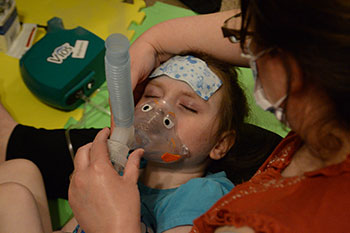 |
|
2022: Medicaid Coverage, Parent's Foreseeable Work Schedule
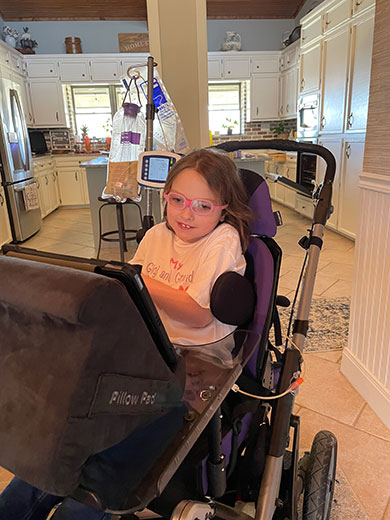 |
The parents efforts speaking with Legislative representatives finally paid off. After 4-years of reoccurring medical expenses and advocating at the State-level. Sophia was finally approved for State-based Medicaid coverage. In 2022, Sophia's medical expenses were expected to be fully covered at 100%. Soon after 2022 started, the parents found out at least one provider's office did not participate on the State-based Medicaid network. Thus the parents had to continue to pay out-of-pocket. The good news, the eligibility for Sophia's notification of Medicaid coverage came directly after signing up for private insurance. As a result, Sophia had tertiary coverage in 2022. Non-medicaid network provider's cost was reasonable and limited expenses.
The parents worked with the Medicaid coordinator to locate a private duty nurse for Sophia. However, like the rest of the market, finding a nurse was very challenging. Once we found a nurse, keeping the nurse was even more challenging. Hospitals were offering nurses double and in some cases triple the amount in pay. Medicaid reimbursements are below makaret value and have been for the past 35-years. Medicaid reimbursements are governed by both Federal and State-level government. The Federal government only matches what the State funds their medicaid expenditures.
There was uncertainty with the ability for both parents to be able to work. Employers made national news, indicating they wanted the favorable work from home model to end. While this model gave the parents the enablement to care for Sophia while making a living. The new indication of change would not help but hinder the parent's ability to stay financially stable. The parents developed an action plan and submitted numerous proposals to their employers for job accommodations, and/or reduced work schedules. The parent's employers would only accept intense work schedule. Sophia's needs were slowly changing and her future needs were starting to become apparent. It was at this pivotable moment, the parents realized a swaping of "Primary" caregiver would be required. |
|
2023: Parent's Intense Work Schedule, DayBue (Trofinetide), Hospitalization
Like all other employers wanting employees to discontinue the work from home model. The parent's employers were no different. Because both parents work and their employer expectations are drastically different. This made managing Sophia's needs near impossible. At the tail end of 2022 the father had to file for [intermittent] Family Medical Leave Act (FMLA). While the mother had already filed for FMLA and the expiration of that leave was fastly approaching. Ultimately resulting in one parent working in the office in the morning, coming home around lunch time. While the other parent leaves to head to the office after lunch time and stay at the office a few hours past normal business hours. On June 1, the parents swap "Primary" caregiver roles. The father was greatful for his employer over the last 5-years for the flexibility to work from home while caring for Sophia. The mother was now the primary caregiver while also working from home.
In 2021 Sophia participate in a drug trial called "Trofinetide". The U.S. Food and Drug Administration (FDA) completed their assessment and evaluation of the study drug. The FDA approved Trofinetide for the general use. The manufacture of Trofinedtide renamed it to "DayBue". The family worked with Sophia's Neurology specialist to obtain a prescription for DayBue. Private insurnace surprisingly covered the cost of the drug; while an insurance appeal process was executed with medicaid and eventually approved.
Sophia caught a string of the flu in May and was hospitalized for 4-days. After the first dosing of DayDue, Sophia was hospitalized for 6-days. Not sure what caused the symptoms landing Sophia in the hospital. Sophia's parents reached out to the Rett Clinic in Houston, Texas. Received guidances this could be caused by anything and possible a "stomach bug". The Rett Clinic license physician, provided the parents with guidances to wait a few weeks and try again but at a much smaller dose. In July the parents tried the recommended smaller dose; within hours of that dose, Sophia show signs of distress and EMS was called. Sophia was transported to the hospital. Sophia was hospitalized for 11-days. During this hosptial admission, the hospital's license physician, diagnosed Sophie "allergic" to DayBue. Late August Sophia was showing signs of distress. Mom took Sophia up to the hosptial for evaluation. During evaluation found Sophia to display "Blue lips", and extreme irritability. Blood Work and X-Rays all came back normal. Sophia was diagnosed with anxiety/cramping and sleep apnea. As a result she now takes new medication and wears a CPAP mask at night. |
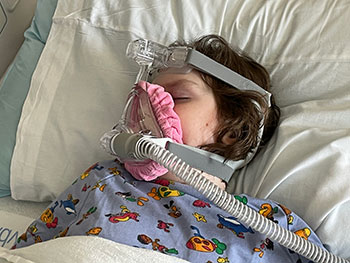 |
|
